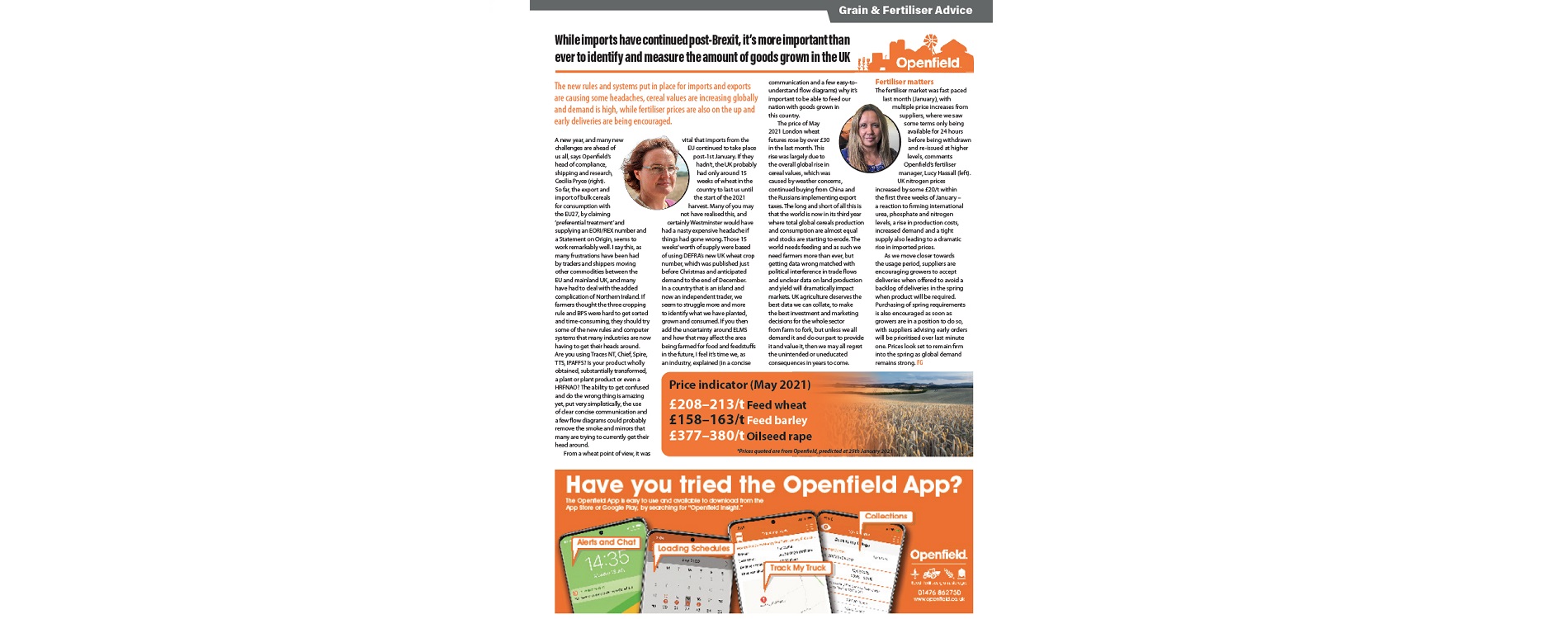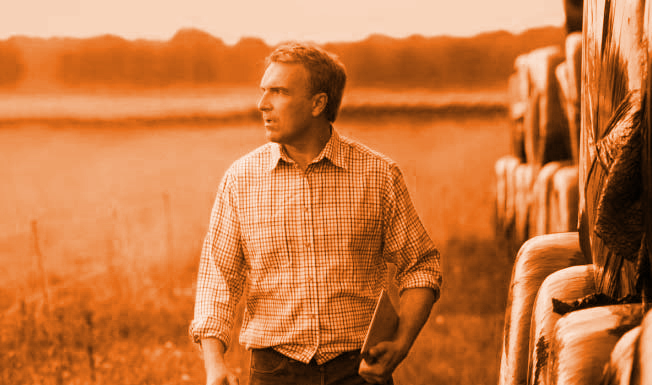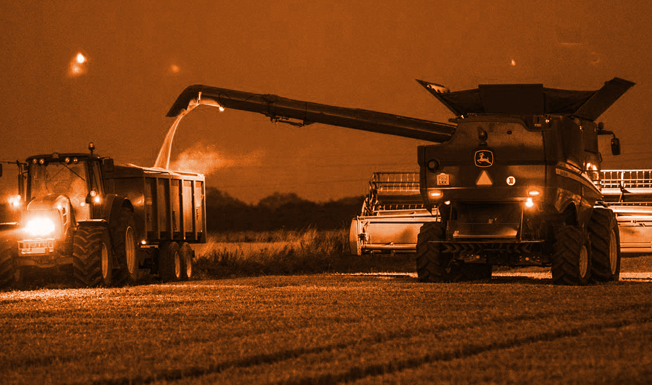While imports have continued post-Brexit, it’s more important than ever to identify and measure the amount of goods grown in the UK
The new rules and systems put in place for imports and exports are causing some headaches, cereal values are increasing globally and demand is high, while fertiliser prices are also on the up and early deliveries are being encouraged.
A new year, and many new challenges are ahead of us all, says Openfield’s head of compliance, shipping and research, Cecilia Pryce. So far, the export and import of bulk cereals for consumption with the EU27, by claiming ‘preferential treatment’ and supplying an EORI/REX number and a Statement on Origin, seems to work remarkably well. I say this, as many frustrations have been had by traders and shippers moving other commodities between the EU and mainland UK, and many have had to deal with the added complication of Northern Ireland. If farmers thought the three cropping rule and BPS were hard to get sorted and time-consuming, they should try some of the new rules and computer systems that many industries are now having to get their heads around.
Are you using Traces NT, Chief, Spire, TTS, IPAFFS? Is your product wholly obtained, substantially transformed, a plant or plant product or even a HRFNAO? The ability to get confused and do the wrong thing is amazing yet, put very simplistically, the use of clear concise communication and a few flow diagrams could probably remove the smoke and mirrors that many are trying to currently get their head around. From a wheat point of view, it was vital that imports from the EU continued to take place post-1st January. If they hadn’t, the UK probably had only around 15 weeks of wheat in the country to last us until the start of the 2021 harvest. Many of you may not have realised this, and certainly Westminster would have had a nasty expensive headache if things had gone wrong. Those 15 weeks’ worth of supply were based of using DEFRA’s new UK wheat crop number, which was published just before Christmas and anticipated demand to the end of December.
In a country that is an island and now an independent trader, we seem to struggle more and more to identify what we have planted, grown and consumed. If you then add the uncertainty around ELMS and how that may affect the area being farmed for food and feedstuffs in the future, I feel it’s time we, as an industry, explained (in a concise communication and a few easy-to- understand flow diagrams) why it’s important to be able to feed our nation with goods grown in this country. The price of May 2021 London wheat futures rose by over £30 in the last month. This rise was largely due to the overall global rise in cereal values, which was caused by weather concerns, continued buying from China and the Russians implementing export taxes. The long and short of all this is that the world is now in its third year where total global cereals production and consumption are almost equal and stocks are starting to erode. The world needs feeding and as such we need farmers more than ever, but getting data wrong matched with political interference in trade flows and unclear data on land production and yield will dramatically impact markets. UK agriculture deserves the best data we can collate, to make the best investment and marketing decisions for the whole sector from farm to fork, but unless we all demand it and do our part to provide it and value it, then we may all regret the unintended or uneducated consequences in years to come.
Fertiliser matters
The fertiliser market was fast paced last month (January), with multiple price increases from suppliers, where we saw some terms only being available for 24 hours before being withdrawn and re-issued at higher levels, comments Openfield’s fertiliser manager, Lucy Hassall. UK nitrogen prices increased by some £20/t within the first three weeks of January – a reaction to firming international urea, phosphate and nitrogen levels, a rise in production costs, increased demand and a tight supply also leading to a dramatic rise in imported prices.
As we move closer towards the usage period, suppliers are encouraging growers to accept deliveries when offered to avoid a backlog of deliveries in the spring when product will be required. Purchasing of spring requirements is also encouraged as soon as growers are in a position to do so, with suppliers advising early orders will be prioritised over last minute ones. Prices look set to remain firm into the spring as global demand remains strong.




